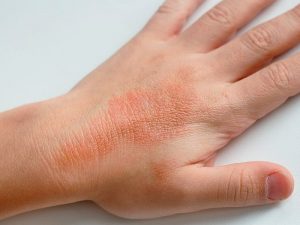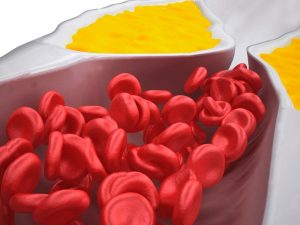Defining Depression
Feeling sad or down are normal human emotions we all experience throughout life, but depression is more than feeling bummed out. Also referred to as clinical depression or major depressive disorder, this condition is a psychiatric disorder that leads to severe and persistent dips in mood. This is the overarching sign of depression, but there are several categories of this illness with specific symptoms. Those affected by depression not only experience changes in how they think but in how they act and feel physically.
Depression Symptoms
Depending on the person and type of depression, symptoms range from mild to severe and can include:
- Feeling sad.
- Loss of interest in previously enjoyed activities.
- Changes in appetite (weight gain or weight loss).
- Trouble sleeping or oversleeping.
- Loss of energy/extreme fatigue.
- Self-isolation from social and personal contact.
- Slowed movements and speech.
- Feelings of worthlessness or guilt.
- Difficulty thinking, concentrating or making decisions.
- Thoughts of death or suicide.
Symptoms must last two consecutive weeks for a patient to be diagnosed as depressed.
Quick Statistics
- According to the World Health Organization (WHO), more than 450 million people worldwide struggle with depression.
- Women are more likely to experience depression than men, with one-third of women experiencing a major depressive episode in their lifetime.
- About one in six adults will experience depression in their lifetime.
- Depression affects about 16 million American adults every year.
- Depression is the leading cause of disability in the United States among ages 15 to
Risk Factors
While anyone can be affected by depression, certain factors play in an individual’s risk:
- Biochemistry: Certain chemical differences in the brain can contribute to an individual’s risk of
- Genetics: Sometimes this condition runs in the family. One identical twin with depression raises the risk of the other developing depression to 70 per cent.
- Personality: Particular personality traits can raise the risk for this disorder. People with low-self esteem, who are easily overwhelmed by stress, or are pessimistic have a higher tendency for depression.
- Environment: This is the nurture side of nature vs Continued exposure to environmental factors such as violence, neglect, abuse or poverty can raise the risk of depression.
Types of Depression
- Major depressive disorder (MDD): This category is the most commonly diagnosed. About1 million adults aged 18 or older in the U.S experienced at least one major depressive episode in 2015. MDD is characterized by the manifestation of at least five of the diagnostic symptoms of depression, with at least one of the symptoms including overwhelming sadness or loss of interest in usual activities. Other unique symptoms include psychomotor agitation or retardation, suicidal ideation and hypersomnia.
- Persistent depressive disorder (PDD): The definition of persistent depressive disorder, or dysthymia, is in the name. PDD is characterized by a persistent dark or sad mood for most of the day on most days for at least two years. The main symptoms of dysthymia in children and adolescents usually manifests as extreme and persistent irritability for at least a year. To be diagnosed with PDD one must show at least two of the following symptoms: poor appetite, overeating, insomnia, hyper insomnia hypersomnia, low self-esteem, poor concentration or hopelessness. Symptom-free intervals of this condition don’t last longer than two months. Symptoms of PDD are not as severe as major depressive disorder.
- Adjustment disorder (with depressed mood): Diagnosis of this type of depression occurs when the symptoms have been triggered within three months of some outside stressor. These stressors typically involve a life change that the individual finds stressful. Stressors are not always negative and can be positive changes such as receiving a job promotion or getting married. Symptoms of adjustment disorder include significant distress and impaired functionality, but these usually resolve themselves within six months. Treatment is usually limited to the initial stressful period.
- Postpartum depression: This form of depression occurs after giving birth. “Baby blues” is a term people use to describe the emotions, such as sadness, fatigue and worry, a woman experiences after having a baby. Postpartum is more than the blues, it is more intense and lasts longer. The Centers for Disease Control and Prevention (CDC) reports that about one in nine women experience postpartum. Symptoms include crying more often than usual, anger, withdrawal from loved ones, feeling distant from their baby, feeling overly anxious, having thoughts about hurting themselves or their baby and doubts about their ability to take care of their.
Depression and Anxiety
Depression and anxiety disorders promote similar symptoms but are separate conditions. Each disorder has different causes and behaviors. Similar signs of the two conditions include nervousness, irritability, problems sleeping and problems with concentration. Many people who have a history of anxiety will develop depression later on.
Depression Treatments
- Depression medications: One of the causes of depression can be a person’s brain chemistry, which is why antidepressants (depression pills) can be a beneficial treatment. These medications work to modify the chemistry in the brain and are not the same as sedatives, “uppers” or tranquilizers and are not The first signs of improvement usually occur within the first two weeks of taking the medication. If there is little to no improvement in this time period, the patient’s psychotherapist can alter the dosage or try a different antidepressant. Treating depression is a process and can take up to three months before the individual experiences the full benefits of the medication.
- Therapy: For some forms of depression, individuals can benefit from psychotherapy. This can be both a short or long-term treatment option to help the patient cope with their circumstances, feelings, thoughts and issues. Addressing one’s past in therapy can help reckon with present feelings. In addition to listening and talking, therapists help patients come up with coping strategies and problem solving for everyday scenarios.











